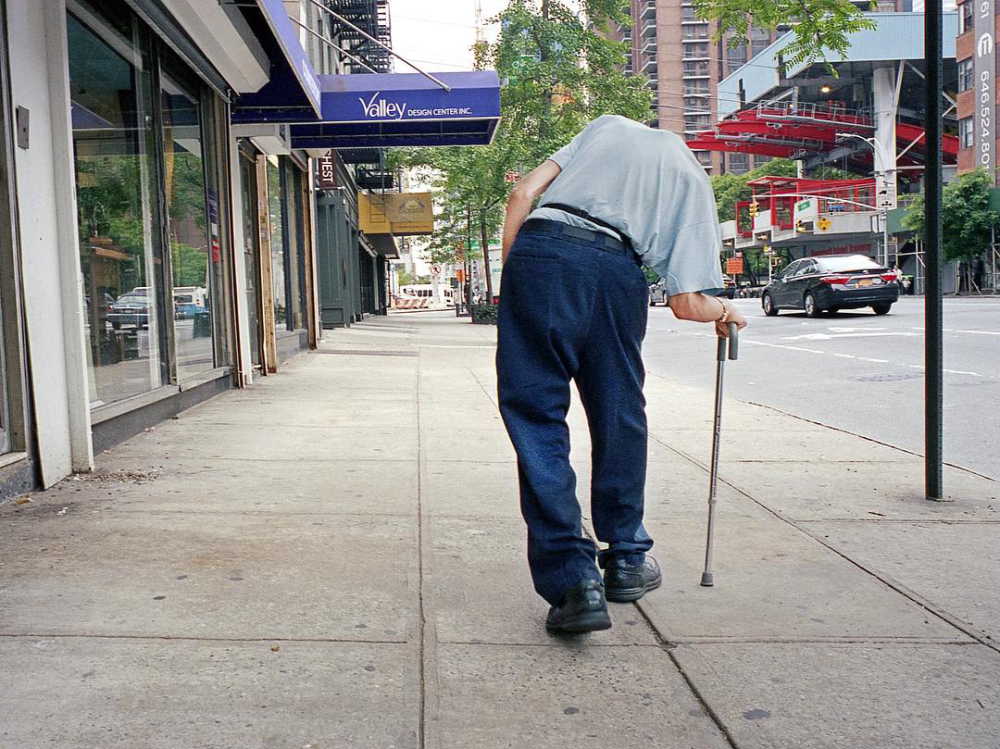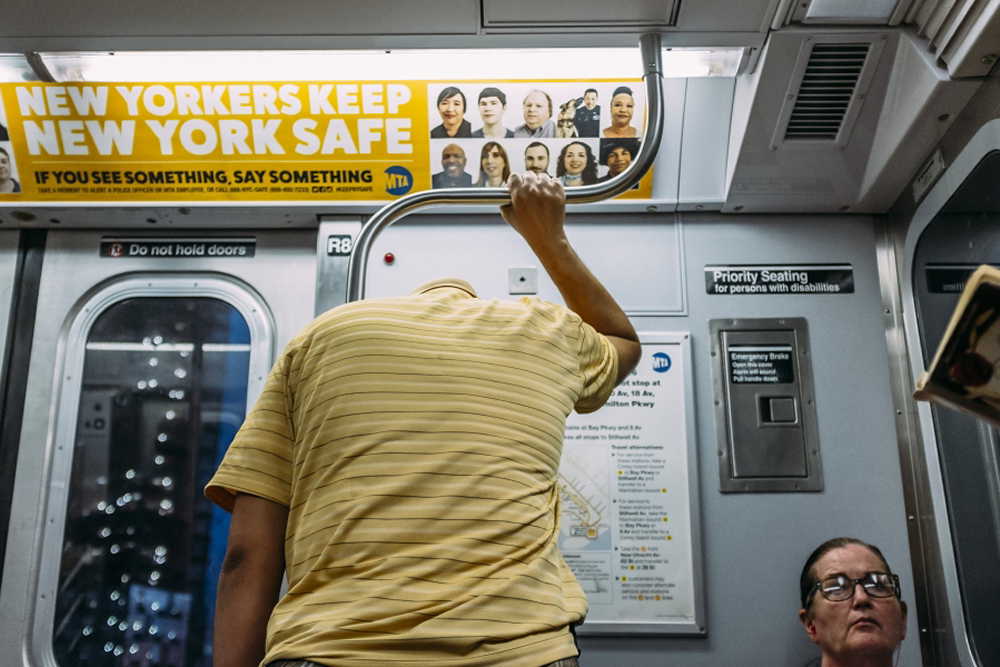This is my second in an ongoing series I started this year examining street photography’s motifs — that is, like any genre, the repeated concepts, elements, subjects, themes, etc. that are present throughout the canon and used similarly by many different photographers. Simply put, there are “types” of shots that have been established and have spread, with my goal here being toward their identification and discussion.
First up was “Money In Mouth,” inspired by the iconic photo on the cover of Jeff Mermelstein’s book, SideWalk. This time around, the initial introduction came from a successor of Mr. Mermelstein, Daniel Arnold, who also is based in NYC and roams its streets with an appetite for the unexpected and absurd.
But unlike our first motif with the presence of something where it’s unexpected, today’s is about the absence of something where it’s expected.
In Frame, Out Of Mind
In following Daniel on Instagram for the last couple of years, the headless motif is one he’s regularly revisited. In fact, it was seemingly a theme in the photos he exhibited at this year’s StreetFoto San Francisco, featuring the below photo among others.

Daniel has a whole feed of photos worthy of exhibition (many of which have been), so why does this particular type of shot stand out for selection? I think one of the comments gives us a clue, alluding to a tale from our country’s distinct mythology.
barbaric_yawp_: Icabod crane over here without the pumkin
The Legend of Sleepy Hollow
Like most American kids growing up, I first encountered Washington Irving’s “The Legend of Sleepy Hollow” in a middle school English class (where I also first read “Rip Van Winkle,” penned by Irving as well and similarly influential).
Originally published in 1820, it’s a seminal story in American culture, one that contributed to the birthing of our own, distinct literary canon. And for nearly two centuries, it has endured, most likely aided by its strong association with Halloween and that holiday’s growth in popularity.
Upon hearing the title, most folks today probably first think of the 1999 movie Sleepy Hollow, directed by Tim Burton and starring Johnny Depp as Ichabod Crane. But did you know, long before Johnny on the big screen, the character was played in 1980 on the small screen (indeed, when television screens were really small) by Jeff Goldblum? Oh, thank you all-storing Internet for preserving Young Goldblum, a national treasure.

But as far as a mental image, one that now supersedes even the particulars of the narrative, it isn’t Ichabod who is conjured (the aforementioned commenter had the characters confused); it’s the Headless Horseman: the Hessian soldier, beheaded by cannon fire, who pursues Crane on horseback (often depicted with a flaming pumpkin in hand).
It’s become an archetypal character, a symbol inseparable from one of our most popular holidays, Halloween — as evidenced, with amazing execution, by one Janeil Stevens, of Hoyt, Kansas, who won the Topeka Capital-Journal’s 2013 Halloween Costume Contest (and with the victory, a $100 gift card). Again Internet, thank you.

All of that being a long-winded way of saying that the headless figure is an indelible image marked on our collective psyche and fundamental to our folklore, the fascination with which pre-dates photography as a medium itself.
“The headless figure is an indelible image marked on our collective psyche.”
Our Attachment
Let’s begin with the basic tension of something not being where it should. It’s eye-catching and interesting, two components any shooter would like to have in a street photo. Furthermore, to add to the immediate concern, it’s a body part. But not just any part. The head. The most important! The CPU of the human unit, so to speak, where all the processing happens (or at least we’d like to believe; hold that thought).
Given the association with decapitation (and thereby death) there’s a feeling of horror implanted. Which isn’t to say all uses of the motif are morbid in mood: in her photo below, master 20th century photographer, Helen Levitt (another NYC shooter, a precursor of Mermelstein), creates comedy with a sort of photographic gallows humor as she juxtaposes a headless mother reaching next to her laughing baby.

And to go deeper in its meaning, I think the motif embodies Freudian psychology’s introduction of the unconscious mind: one of repressed, “under-the-water” desires, impulses, and memories that are the driver of most of our behavior, doing so invisibly to our conscious mind.
Headless photos, especially like the example from Arnold above, show us a human body perfectly going about its day literally without thought. It serves as a powerful metaphor for the way we mindlessly live, so often on autopilot without conscious direction, a commentary on the unconscious living that seems to be a core truth about being human (for better or worse).
“It serves as a powerful metaphor for the way we mindlessly live.”
And continuing the psychological angle, there’s also the subject of aging: growing old is one of our most common fears, probably the source of our strongest avoidance. Although some photos in this motif appear to be someone simply looking down, and others obviously with the head in its normal position obscured, many appear to show someone suffering from “dropped head” syndrome. It’s a condition, although rare, that seems to disproportionately affect the elderly. There’s a tragedy to someone being forced to face life without the ability to lift their head.

Given the variability in its discovery and capture — whether from looking down, a dropped head, an obfuscated one, or a pulled-up jacket over a hatless one in the winter — and the richness in its interpretation and meaning, the headless motif looks to have legs (rimshot, please!) now and in the future.
Examples






My Own Attempt
From a couple weeks ago, this is my first decent headless capture, one that I spotted while riding my bike south on Clark Street in Chicago. I took a few photos as the man made his way into the subway. Note that this, the last one taken, was the best of the lot. A reminder to always work the scene when possible!

Leave a Reply